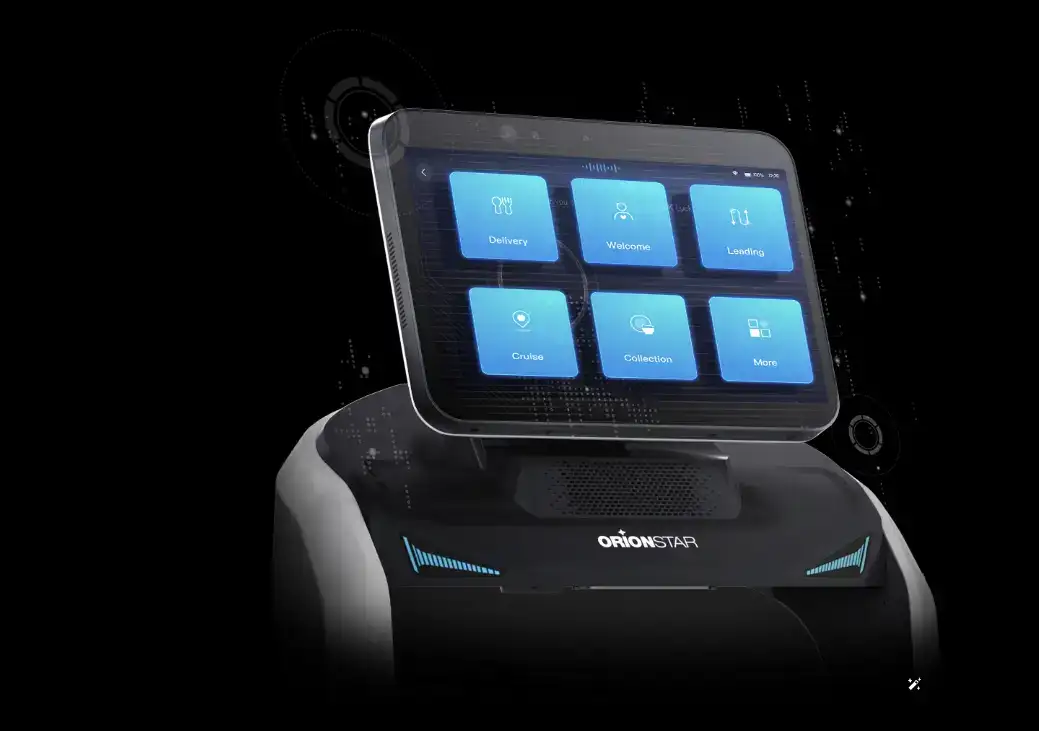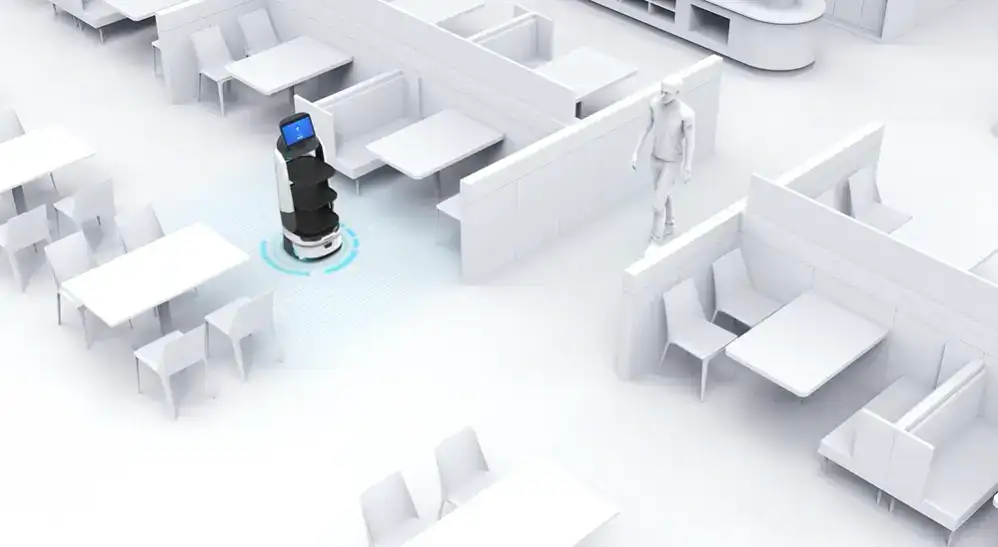Have you ever been served by a robot at a restaurant? How did it feel? Driven by technological advancements and evolving consumer demands, the dining industry is undergoing a dramatic transformation led by the rise of the robot restaurant. From robotic chefs flipping burgers or crafting ramen to automated waitstaff delivering meals, these establishments are reshaping how we perceive food service.
In this article, we will dive into how robotic restaurant systems operate and explore the benefits and challenges behind this innovative trend. Are you interested in it? Keep reading to learn more!
What Is Robot Restaurant?
A Robot Restaurant is basically where great food meets cool tech! Instead of your usual dining setup, these places bring in a fun twist by using robots for restaurants to help with things like bringing your food to the table or showing you to your seat. They handle some of the boring, repetitive stuff so the staff can focus more on giving you a great experience.
One big reason these restaurants are catching on is that many in the industry are facing labor shortages. With growing competition from other industries, changes in workforce demographics, quality-of-life concerns, and the rise of gig economy jobs, it’s getting harder for restaurants to find and keep staff. That’s where robotics for restaurants come in—offering a helping hand to keep things running smoothly.
These restaurant robots aren’t just about efficiency—they make the whole experience more fun, interactive, and memorable. So if you're up for dinner with a futuristic twist, a Robot Restaurant is definitely worth checking out!
How Do Robot Restaurants Work?
The functionality of a robot restaurant depends on a combination of robotics, AI, and smart systems. Here’s a breakdown of how they typically operate:
Ordering: Many robot restaurants let customers place their orders using digital kiosks, mobile apps, or touchscreen menus right at the table—making the process quicker and more convenient. In some spots, you might even find voice-activated robots that can take your order for you.
Food Preparation: Robotic arms or machines equipped with AI can cook meals with precision. For example, robots might grill patties or brew coffee, ensuring consistency in quality and portion size.
Delivery: Autonomous robots navigate the dining area to deliver food to tables. Equipped with sensors and mapping technology, they avoid obstacles and follow pre-programmed routes. Some even entertain diners with dances or greetings.
Cleanup: Robots can bus tables, collect dirty dishes, and return them to the kitchen while floor-cleaning robots maintain a spotless environment.
Behind the scenes, these systems are supported by software that coordinates tasks, tracks inventory, and optimizes workflows. For instance, a robot chef might adjust ramen flavors based on customer preferences, reflecting the innovations seen in restaurants with robot servers.

Benefits of Robot Restaurants
The rise of the robot restaurant brings several advantages to both operators and customers:
Enhanced Efficiency: Robots can autonomously handle tasks such as food delivery, reducing wait times and allowing human staff to focus on personalized customer service. For instance, the LuckiBot Pro utilizes advanced visual SLAM technology to navigate complex environments efficiently, ensuring timely and accurate service.
Consistency: Automated cooking ensures every dish meets the same standard, eliminating human error. It is particularly valuable for chains aiming to maintain brand uniformity.
Improved Hygiene: With minimal human contact, robot restaurants enhance food safety—a priority amplified since the pandemic.
Enhanced Customer Engagement: The innovative presence of robots can attract more guests, offering a unique selling point in a competitive market. The LuckiBot Pro's 14-inch HD display and interactive features provide an engaging dining experience, captivating customers and encouraging repeat visits.
Challenges of Robot Restaurants
Like any innovation, robot restaurants come with a few challenges—but the good news is that most of them are totally manageable, especially when you’re working with a trusted provider like OrionStar.
Initial Cost: One of the first concerns many restaurant owners have is the upfront investment. It’s true that high-tech equipment can come with a price tag, but that doesn’t mean it’s out of reach. OrionStar actually offers a flexible leasing model, so you don’t need to make a big one-time payment.
Lack of Personalized Service: Some people wonder if robots can match the warmth of human interaction. And while robots aren’t meant to replace that, new advancements—especially in large-model AI—are making it possible for robots for restaurants to deliver more personalized service than ever before.
After-Sales Support: Robots require consistent upkeep, including software updates and repairs. Luckily, OrionStar takes this seriously. Our after-sales service is well-established and highly responsive. If you ever run into an issue or just want to learn more, you can easily get one-on-one help from our experts. You can even book a personalized demo to see the robot in action before making a decision.
Popular Robot Restaurants Around the World
Robot restaurants are popping up globally, each offering a unique twist on the concept. Here are some notable examples:
Spyce Kitchen (Boston, USA): Launched by MIT graduates, this fast-casual robot restaurant features a robotic kitchen that cooks meals ordered via kiosks. Human staff adds finishing touches, blending automation with culinary expertise.
Hema Robot Restaurant (Shanghai, China): Designed by Alibaba, this high-tech eatery uses robots to deliver meals along rails from the kitchen to tables. Orders are placed via an app, showcasing a fully integrated system.
Robot Chacha (New Delhi, India): Billed as India’s first robotic restaurant, it plans to use robots for serving and entertaining guests, merging technology with local flavors.
Kura Revolving Sushi Bar (Multiple U.S. Locations): This chain combines conveyor belts for sushi delivery with drink-serving robots, offering a modern take on traditional Japanese dining.
Fritz’s Railroad Restaurant (Kansas City, USA): A pioneer in automation, it uses model trains to deliver food, paired with robotic drink servers, creating a nostalgic yet futuristic vibe.
Conclusion
Have you learned more about robot restaurants? As robotics and AI continue to advance, the challenges robots face today could soon be solved, making them even more practical for restaurant settings. In the future, these improvements could elevate the dining experience, blending innovative technology with a more personalized and engaging service. For a glimpse of this exciting future, try a robot-assisted dining experience featuring cutting-edge models like the LuckiBot Pro, and see how technology and hospitality can come together in new and inspiring ways.
FAQs about What Is Robot Restaurants
Where is the restaurant with robots?
Restaurants with robot servers exist worldwide. Notable examples include Spyce Kitchen in Boston, USA; Hema Robot Restaurant in Shanghai, China; and Kura Revolving Sushi Bar across the U.S. Japan also features ramen-cooking robots in various locations.
Do robot restaurants replace human jobs?
No. Robot restaurants automate certain tasks, reducing the need for some human roles, particularly those that require repetitive or manual labor. However, they don’t necessarily replace all human jobs. Instead, they can shift the focus of human staff toward providing personalized service, managing operations, and enhancing the overall dining experience.

